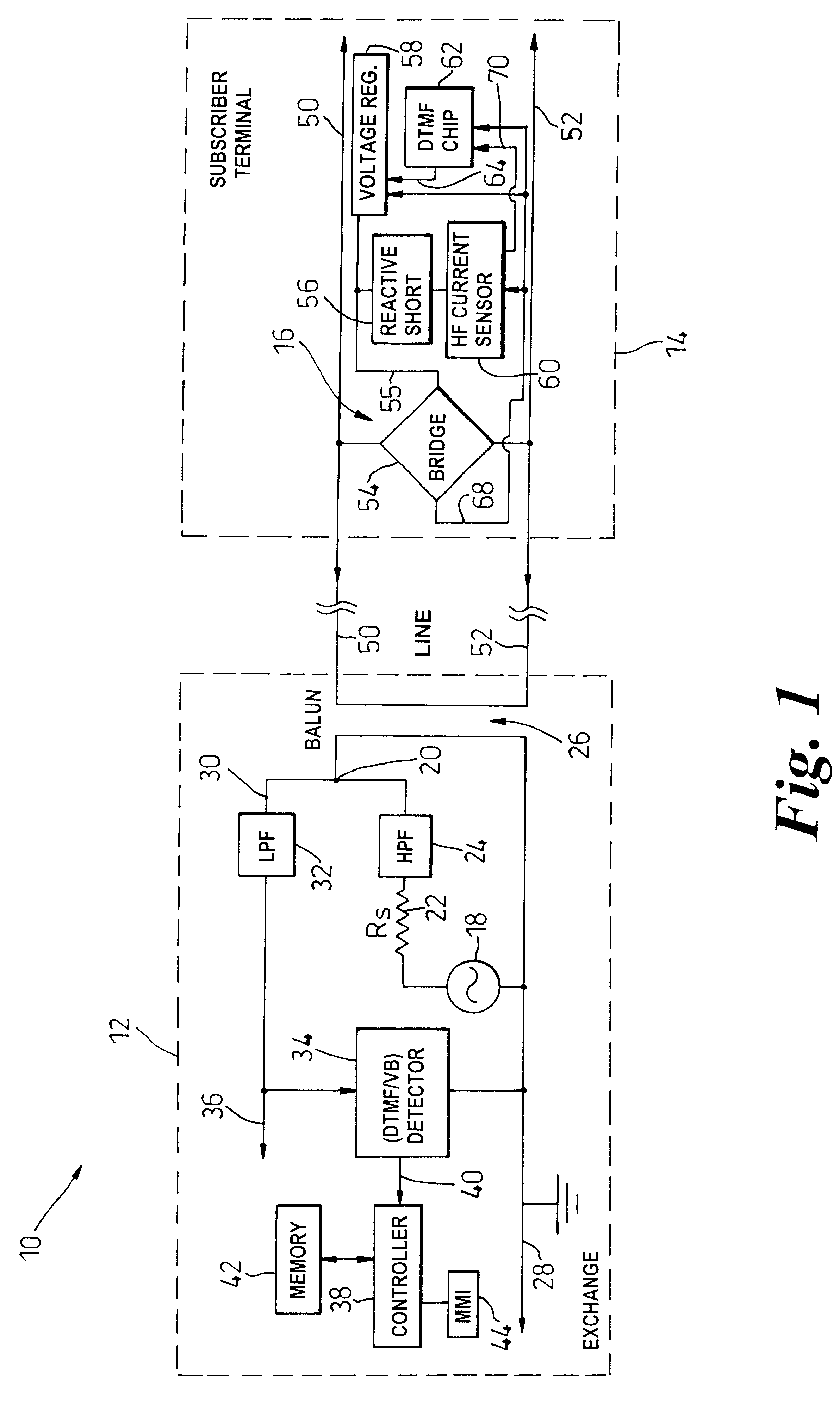Line testing method and apparatus therefor
- Summary
- Abstract
- Description
- Claims
- Application Information
AI Technical Summary
Benefits of technology
Problems solved by technology
Method used
Image
Examples
Embodiment Construction
Generally, the preferred embodiments of the present invention function to measure high frequency (hf) attenuation of a copper pair using a low cost module that can be inserted into a socket terminating the telephone cabling at a customers premises. More particularly, the module contains a simple high frequency detector having an output that is representative (i.e. a measure) of the level of a received test signal launched into the copper pair at a network end, i.e. typically at an exchange. Consequently, the module (which may co-operate with a subscriber terminal) provides an indication into the network that can be assessed by the operator, with the indication reliably transmitted in the voice band for generally assured recovery.
FIG. 1 is a block diagram of a wireline communication system 10 having exchange test system 12 and subscriber-related equipment 14 containing test circuitry 16 embodying preferred features of the present invention. As will be appreciated, the exchange 10 is ...
PUM
 Login to View More
Login to View More Abstract
Description
Claims
Application Information
 Login to View More
Login to View More - R&D
- Intellectual Property
- Life Sciences
- Materials
- Tech Scout
- Unparalleled Data Quality
- Higher Quality Content
- 60% Fewer Hallucinations
Browse by: Latest US Patents, China's latest patents, Technical Efficacy Thesaurus, Application Domain, Technology Topic, Popular Technical Reports.
© 2025 PatSnap. All rights reserved.Legal|Privacy policy|Modern Slavery Act Transparency Statement|Sitemap|About US| Contact US: help@patsnap.com



